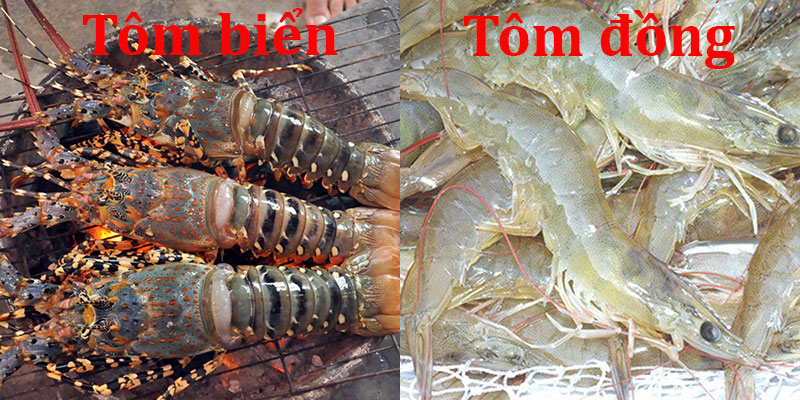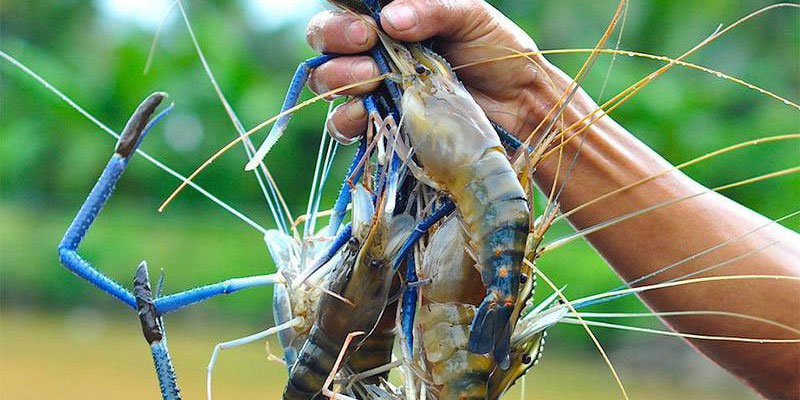Distinguishing Between Sea and River Shrimp

|
Sea Shrimp |
River Shrimp |
|
|
Habitat |
Found in the open sea. |
Inhabit ponds, marshes, rivers, and lakes. |
|
Famous Varieties |
Iron shrimp, spear shrimp, and lobster, to name a few. |
Primarily tiger shrimp. |
|
External Features |
Sea shrimp typically have stronger claws, harder shells, and vibrant colors. They tend to be larger than river shrimp. Each type of sea shrimp has unique colors and characteristics: for instance, spear shrimp are usually white, while lobster are large and robust, with green inner claws and shiny shells. |
River shrimp are mostly white-green in color, with relatively small heads. Their bodies are smaller and rounder compared to sea shrimp. |
|
Shell Characteristics |
Thicker shells. |
Thinner and softer shells. |
|
Flavor |
Sea shrimp meat has a sweet and salty taste, with a strong flavor and chewy texture. |
River shrimp meat is tender, flavorful, and sweet. |
|
Price |
More expensive than river shrimp. |
Less costly than sea shrimp. |
Nutritional Value of Sea and River Shrimp

|
Sea Shrimp |
River Shrimp |
|
|
Nutritional Value |
Rich in protid, calcium, phosphorus, iron, vitamin B1, B2, and PP. Also contains cholesterol, melatonin, omega-3 fatty acids, and polysaccharides in the shell. |
High in protein, potassium, phosphorus, magnesium, iodine, and vitamin A. |
|
Health Benefits |
Sea shrimp have a sweet and salty taste, and are considered warm in nature. They are believed to have kidney and yang tonifying properties, and can help with phlegm and indigestion. Used for headaches, dizziness, bone and joint pain, paralysis in hands and feet, skin itching, toothache, mouth ulcers, loss of appetite, and indigestion. |
River shrimp meat is soft, fluffy, and easy to digest, making it a nutritious food for the elderly and those with weak constitutions. River shrimp are sweet and warm in nature, with kidney and yang tonifying properties. They are also believed to be detoxifying and can support the treatment of kidney and yang deficiencies, as well as mastitis and boils. An excellent food choice for pregnant women, the elderly, and children. |
Which is Better: Sea or River Shrimp?
Both river and sea shrimp offer higher nutritional value than many other foods, such as meat, fish, and eggs. Therefore, it is challenging to determine which type of shrimp has superior nutritional benefits.

If we set aside nutritional value, sea shrimp undoubtedly offer a more delicious and natural flavor than their river counterparts. However, sea shrimp tend to be significantly more expensive and are often stored for extended periods. Thus, if you seek a tasty shrimp option without breaking the bank, river shrimp are the way to go.
The choice between sea and river shrimp ultimately depends on personal preference and taste. The most important consideration is selecting fresh, chemical-free produce and maintaining a balanced diet to safeguard your family’s health. Don’t forget to check out our other articles for more insights!
We hope that this information has helped address some of our readers’ queries.
“The Ultimate Guide to Freezing Bone Broth for Delicious Dishes”
“Stock is integral to the flavor of soups and stews. While a variety of stocks can be made from different ingredients, preparing them is time-consuming and making large batches is challenging to store. So, how do you freeze stock to capture that delicious, sweet flavor from the bones for future use?”




































